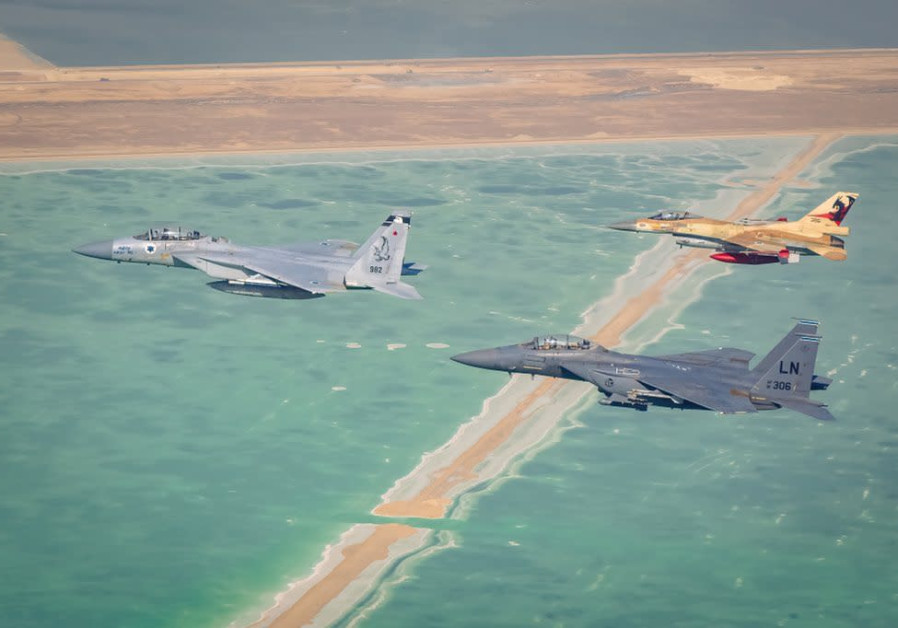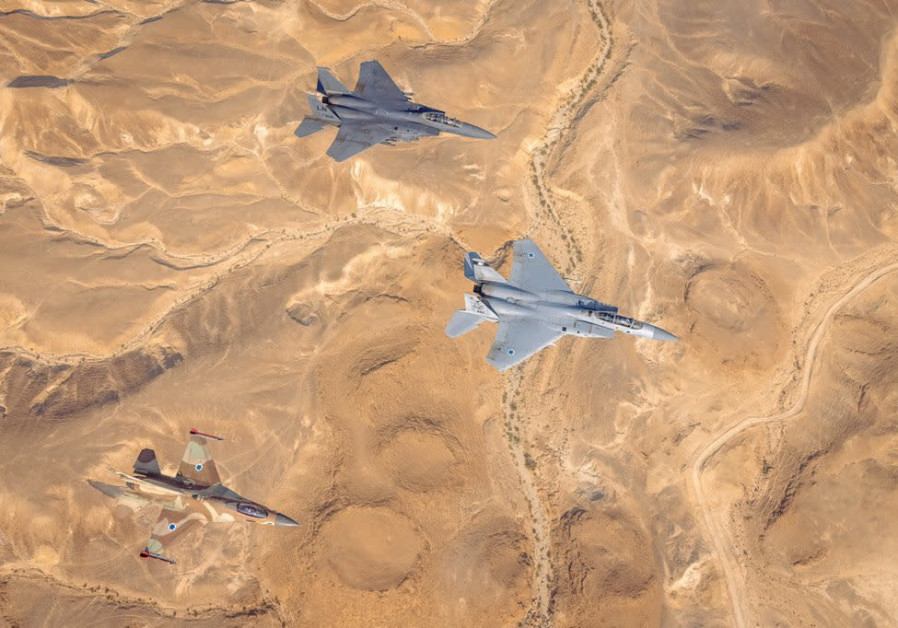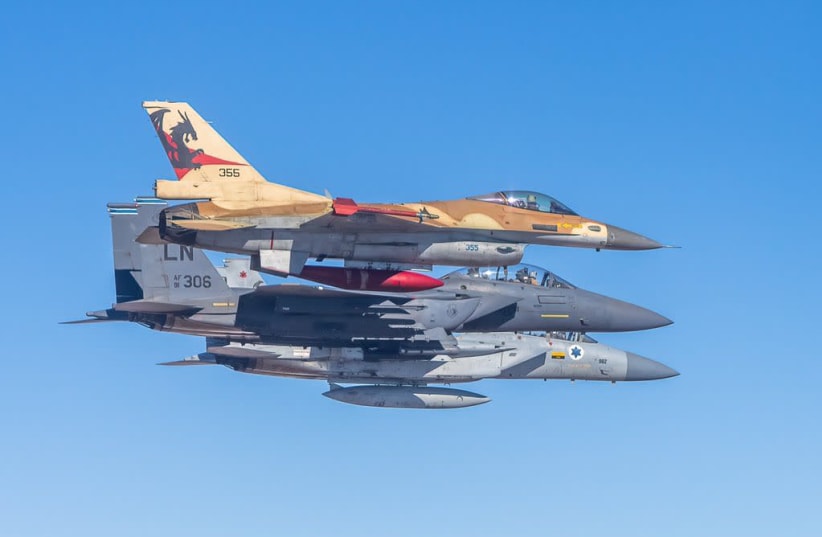Israeli Air Force pilots flew alongside their counterparts from the United States Air Force Central Command (AFCENT) in the first-of-a-kind aerial drill on Tuesday.
Dubbed “Desert Eagle,” the drill was led by the IAF’s 133rd Knights of the Twin Tail Squadron flying F-15s, along with the USAF’s 494th Squadron. Jets from the 115th Flying Dragon Squadron simulated enemy jets.
According to a statement released by the IAF, the “aircrews practiced various operational scenarios in the air, including joint exercises against ground, aerial and combined threats while striking designated targets. The historic cooperation between the Israel Air Force and AFCENT Command is part of the tightening of strategic and long-term cooperation between Israel and the United States.”

Israel was moved from EUCOM (European Command that currently focuses on Russia and its threats against Europe and NATO) to CENTCOM’s area of responsibility in January.
The move to CENTCOM is believed to not only simplify the cooperation with American troops in the region, but also has the potential for a regional coalition with Arab countries that have normalized ties with Israel against shared threats posed by Iran.
Both IDF Chief of Staff Lt.-Gen. Aviv Kohavi and Defense Minister Benny Gantz believe that moderate Sunni states such as the United Arab Emirates, Bahrain and others who have not yet signed agreements with Israel can deepen their ties, especially in terms of regional security arrangements.
CENTCOM Commander Marine Gen. Kenneth McKenzie told Defense News that the move would “put an operational perspective” on the Abraham Accords and will set up “further corridors and opportunities to open up between Israel and Arab countries in the region” on a military-to-military level.
The increased cooperation with CENTCOM and possibly even the Gulf states is expected to give Israel a leg up in terms of dealing with the threat posed by Tehran.
Despite corona affecting the ability to hold in-person training, the IAF took part in close to 20 drills over the past year.
Two weeks ago US and Israeli troops held a week-long drill dubbed “Juniper Falcon,” which tested the level of coordination between the two countries in the event of a ballistic missile threat against Israel.

Washington and Israel have signed an agreement that would see the US assist Israel with missile defense in times of war. The IDF released an updated intelligence assessment a week before the drill began that said Hezbollah has an arsenal between 130,000 and 150,000 rockets and missiles, and could launch some 3,000 projectiles a day for at least a week should fighting break out.
The exercise was a continuation of a virtual air defense drill that took place in February with IDF troops operating in Israel and American troops in Germany where EUCOM is based.
